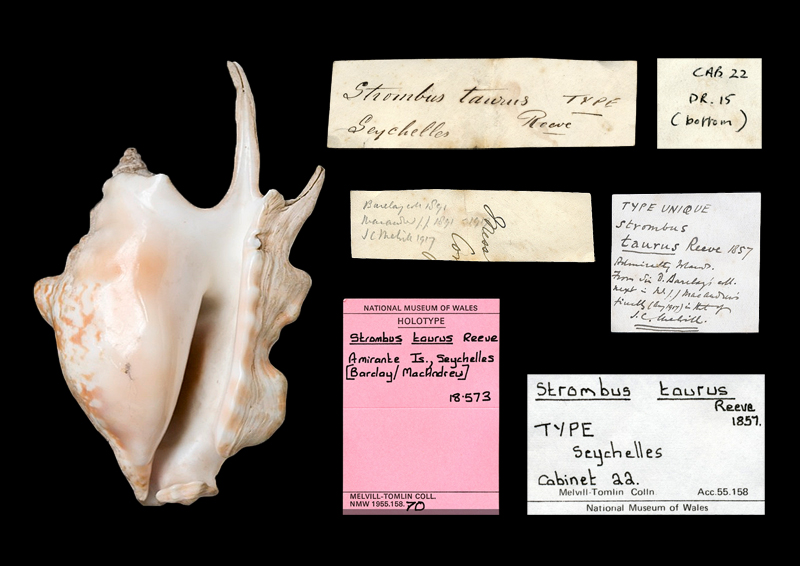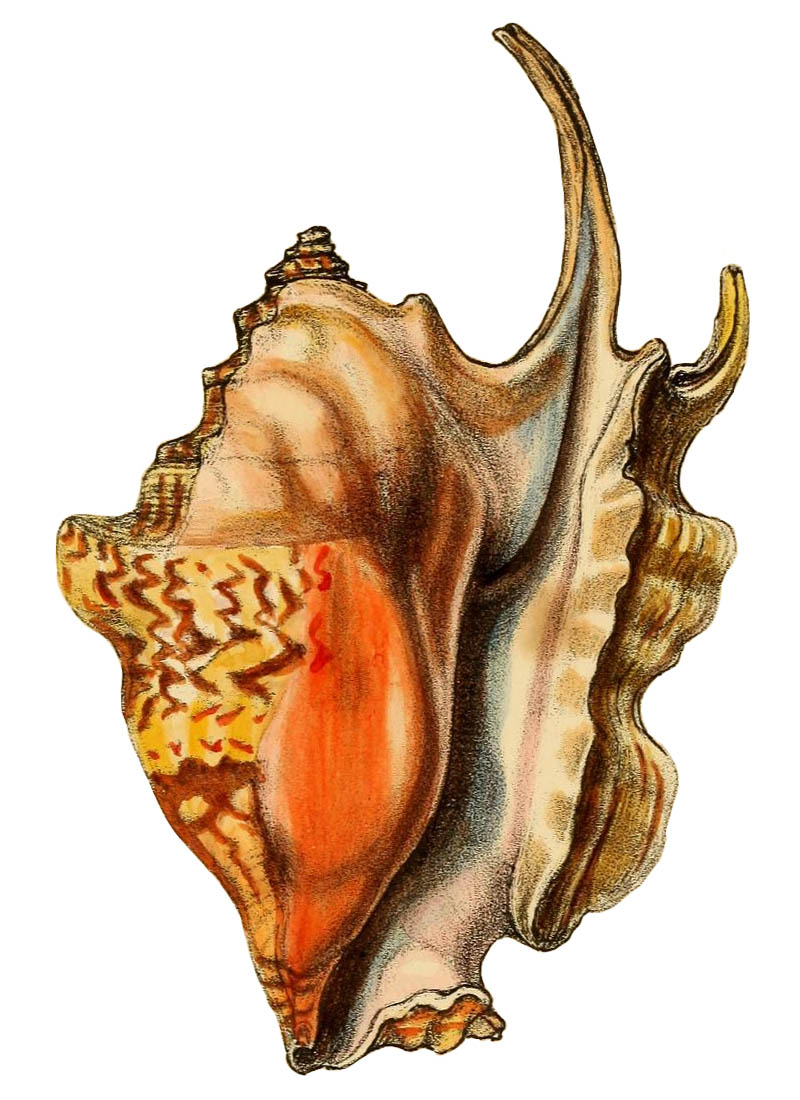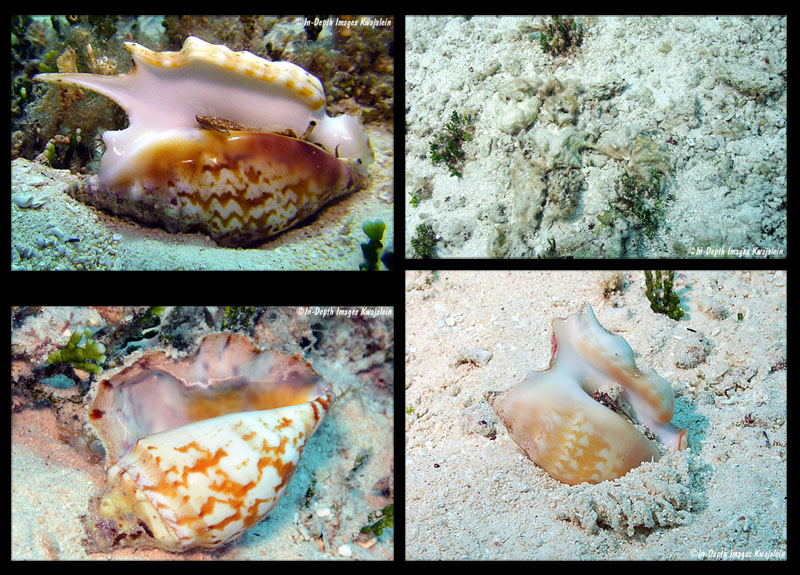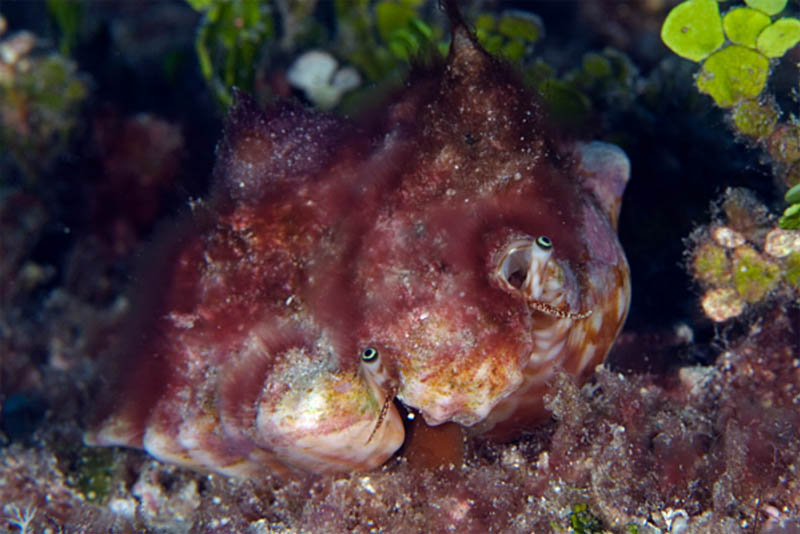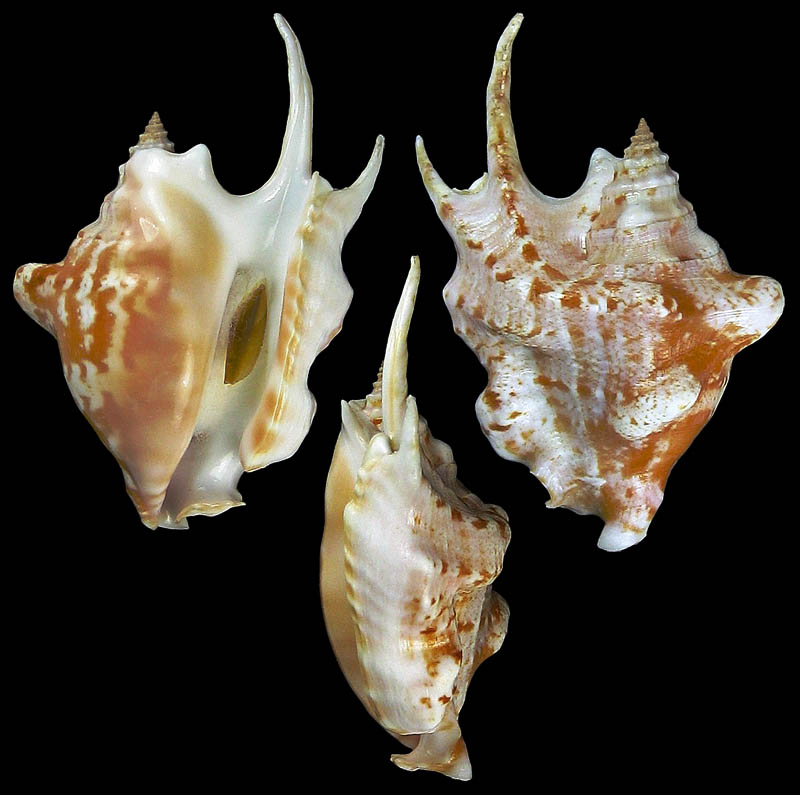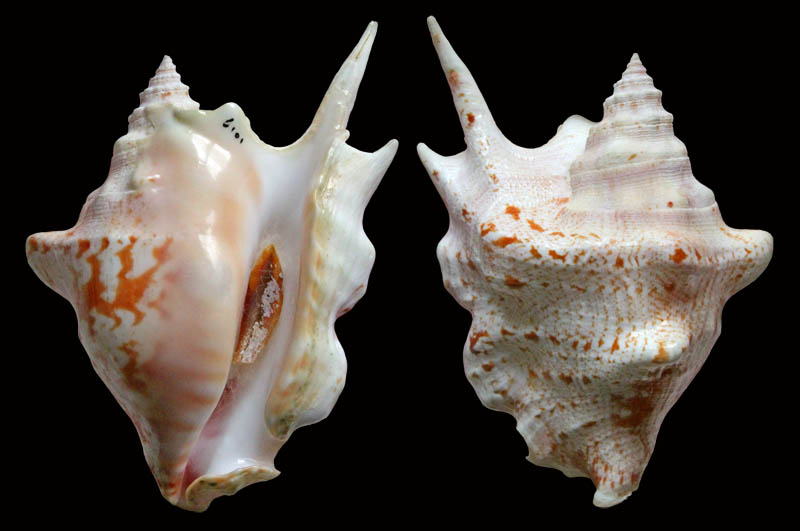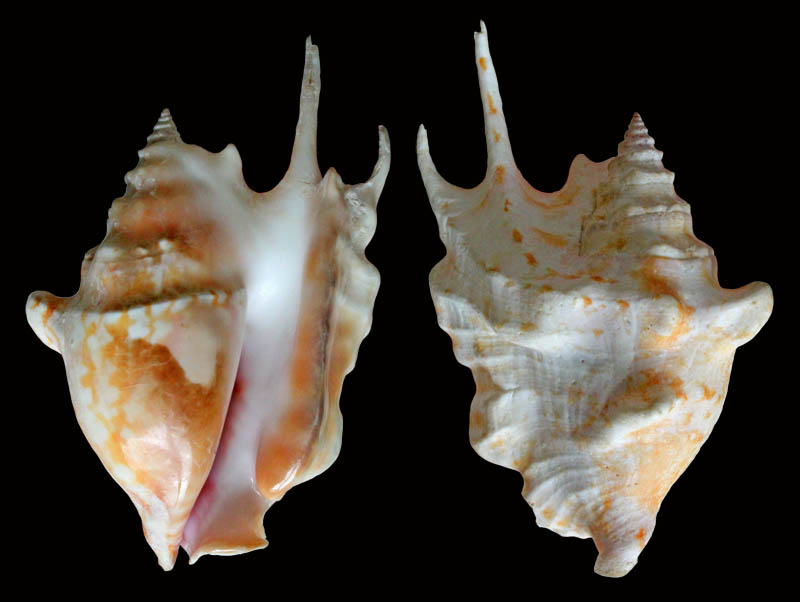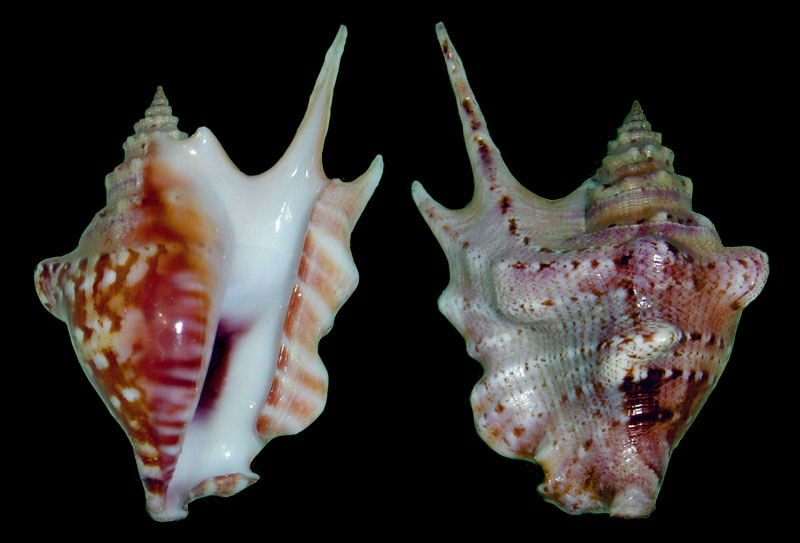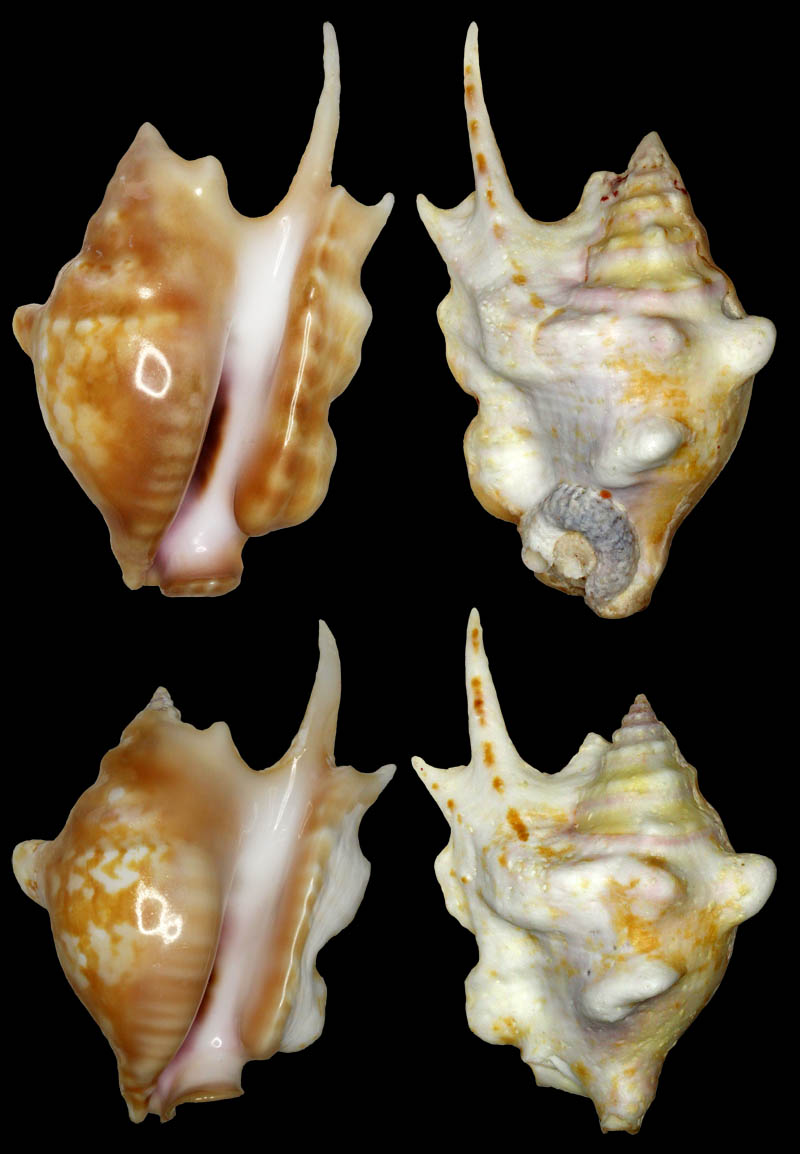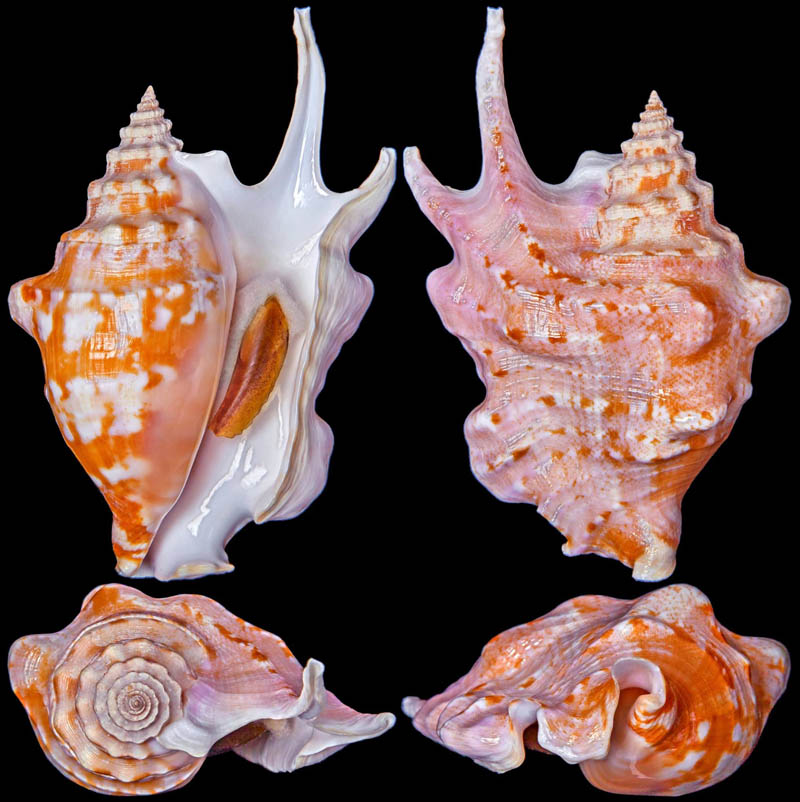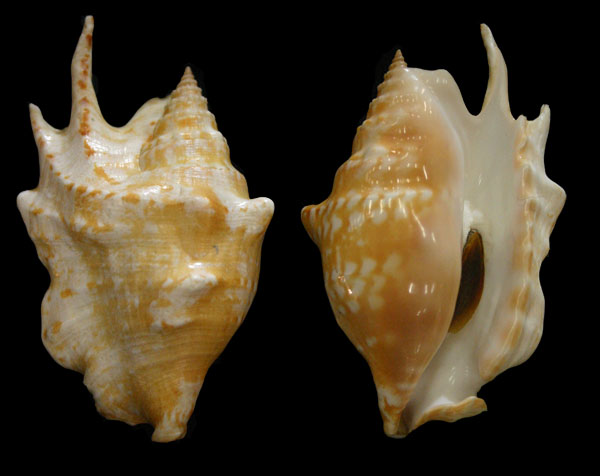Stromboidea
Original Description of Strombus taurus by Reeve, 1857, p. 207:
- "1. Strombus taurus (PI. XXXVII. fig. 3). Strom. testa ovata, crassissima, ponderosa; spira exserta, nodoso-tuberculata; anfractibus transversim striatis et tenuiliratis, ultimo superne obtuse angulatis et perampliter bi- tri-tuberculato, tuberculo obliquo peramplo infra in medio ornato; columella densissime callosa, superne fere ad apicem appresse dilatata; apertura subcontracta, labro dense incrassato, tuberculis peramplis obtusis armato superne bidactylo, dactylo supremo elongato, curvato; albida, aurantio-fusco variegata et sparsim vittata, columella et apertura fauce rubido-carneo tinctis."
Locus typicus: "Hab. Amirante Islands, a group of the Seychelles." (Reeve, 1857, p. 207)
- Abbott, 1960, p. 59: "The type which was in Sir David Barclay's collection was sold in 1891 and is probably in private hands. It has not been found in the British Museum. The type locality is "Amirante Islands" in the western Indian Ocean. This may be an error and I suspect the original label read "Admiralty Islands" which are close to the known range of this Micronesian species. Tryon who corresponded with Sir David Barclay changed the locality in the Manual of Conchology to "Admiralty Islands". Unfortunately, I have been unable to find any reference to this in Barclay's letters, but I suspect the change was made with cause."
Dimensions: "Long. 3 1/2 poll., lat. 2 5/8 poll."
Strombus taurus Reeve, 1857; Holotype; NMW.1955.158.00070; copyright Amgueddfa Cymru - National Museum Wales, Cardiff
Strombus taurus Reeve, 1857, pl. XXXVII, fig. 3
Comment by Reeve, 1857, p. 207:
- "This remarkable shell, which Sir David Barclay has for some time past known as an undescribed species, and distinguished in his cabinet by the above name, is curiously intermediate in its generic characters between Strombus and Pterocera. In detail of pattern and sculpture it resembles S. laciniatus, but there is a large central oblique tubercle on the back, and the tip is thickened into two very large obtuse oblong tubercles, the upper part being produced into two decided Pterocera claws, one of which is prolonged in a curved manner to the extent of an inch and a half. The specimen has rather the appearance of being malformed; but notwithstanding this seeming irregularity of growth, there is no doubt whatever of its being specifically distinct from any hitherto described form."
Comment Amgueddfa Cymru - National Museum Wales, Cardiff:
- This beautiful shell belonged to Sir David Barclay who kept it in his collection until he died. It was then auctioned at the Barclay sale in 1891 (lot no 1146); G. B. Sowerby (3rd) writes in a letter to J. C. Melvill on 14th July 1891 “The Strombus taurus went for £5 10s, that would have gone higher, but I would not bid against Mr MacAndrew.”. It remained in J. J. MacAndrew’s collection until August 1917 when his widow sold a portion of his collection for the benefit of the Red Cross funds and it was then that Melvill acquired it.
History and Synonymy
Sinustrombus taurus (Reeve, 1857: 207, pl. 37 fig. 3) (Strombus)
Vernacular Names
2007
Bandel, 2007, p. 155:
- "Strombus taurus from the tropical Pacific Islands such as Marshall Island lives on sand in the illuminated Zone and has a shell of about 100 mm in height. The spire is high and pointed and there are at least nine whorls of the shell. Ornament is by a subsutural spiral rib that bears tubercles which on the body whorl are fewer and larger. The body whorls has two more irregular spiral ribs which end in the undulations of the outer lip and the stromboid notch is narrow and deep. The posterior margin of the lip with the outermost two of these is undulations have been extended to form spines, of which the posterior one in the longest. The attachment of the lip is also with a low rounded spine to the last three whorls of the spire."
Reports
Jeanette & Scott Johnson about Sinustrombus taurus from Kwajalein Atoll:
- "Sinustrombus taurus are known primarily from the Marshall and the Marianas Islands. In the Marshalls, they have a very patchy distribution. We saw none in three years of searching at Enewetak Atoll. On a short research trip to Rongelap in 1982, we looked where they had been reported more than 22 years before (Indo-Pacific Mollusca), and there was still a healthy population. At Kwajalein, there are a few large lagoon pinnacles in the northern half of the atoll where there are a fair number, usually distributed in pairs or sometimes groups of three on sand and rubble at depths of about 8-10m. Also, at some spots along the northern atoll interisland reefs they form rarely-found taurus "herds" where 50 or more specimens distributed usually in pairs might be counted in an area of sand, rubble, and Halimeda a hundred meters or so in diameter. Such a herd might last a year or two in an area then disappear. Another place where specimens are occasionally seen is on sand and rubble at the bases of some large midlagoon pinnacles at depths of 30 to 40m. Curiously, at Kwajalein they are nearly absent from the southern half of the lagoon. A couple of specimens have been found on the seaward reef, but they are very rare there. Shells range up to about 120mm in length. Most shells are heavily encrusted and often bear shell-damaging cap shells or vermetid "worm" (mollusk) tubes."
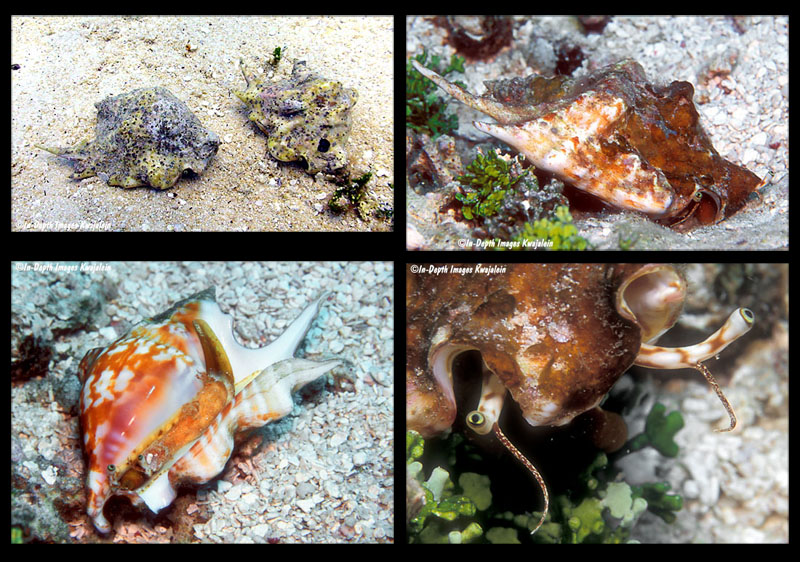
- top left: "A pair of moderately encrusted specimens on a typical sand and algae substrate."
- "The further three photos show a younger shell with brighter than usual coloration."
- top left: "This specimen is still thickening up its outer lip and filling in its spine."
- top right: "A group of three is well camouflaged on a sand, rubble, and algae substrate."
- bottom left: "A juvenile."
- bottom tight: "Egg masses, like that just below the specimen, are mixed up with mucus and sand and often buried under the top layer of sand. The longer spine on this female is broken off, a common flaw in the shell."
All Photos of Kwajalein Atoll-specimens courtesy Scott & Jeanette Johnson, Kwajalein Atoll
Doug Brennan about Sinustrombus taurus from Guam:
- "Just prior to the Typhoon Choi-wan, a friend of mine let me know he ran into a "herd" of S. taurus. There were about three dozen of them hopping around on course, algae covered rubble in about 15 meters of water. I have heard that S. taurus travel in large groups but have never seen more than two or three at one time. I have also heard about large groups of them from friends on Guam, too. I wonder if they move into shallow water to feed prior to a storm."
Bob Abela about Sinustrombus taurus from Guam:
Sinustrombus taurus (Reeve, 1857); ~60 ft.; exposed on hard reef; Hospital Point, Guam; 11 Nov 2007; photo Bob Abela
Specimens from private collections
Sinustrombus taurus (Reeve, 1857); Orote’ Cliffs near Barracuda Rock, Guam Island, Mariana Islands, Micronesia, USA, North Pacific Ocean; 95 ft in silt and rubble; 2/1984; 96 mm; Coll. Paul Merrill
Tricornis taurus (Reeve, 1857); Hospital Point near Tumon Bay, Guam Island, Mariana Islands, Micronesia, USA, North Pacific Ocean; among silty sandy grass at 45-55 ft.; 1995; Coll. Gijs Kronenberg no. 6101
Strombus (Tricornis) taurus (Reeve, 1857); Rongelap Atoll, Marshall Islands, Micronesia, North Pacific Ocean; inside lagoon on sand at 5-8 ft.; 3/1985; Coll. Gijs Kronenberg no. 5549
Sinustrombus taurus (Reeve, 1857); Saipan Island, Marianas Archipelago, Northern Mariana Islands, Micronesia, USA; 95,2mm; collected on sandy rubble at 20m; Coll. Doug Brennan
Sinustrombus taurus (Reeve, 1857); R-Buoy Pinacle, Kwajalein Atoll, Marshall Islands, Micronesia, North Pacific Ocean; at night 30-50 m; t: 108 mm, b: 98 mm; Coll. Christian Börnke
Sinustrombus taurus (Reeve, 1857); Roco Island, Marshall Islands, Micronesia, North Pacific Ocean; 93.5mm; Coll. Chong Chen
- Comment Chong Chen: "The "Bull Conch" is a striking classic rarity among the strombids characterised by two posterior spines; it is one of the most coveted conchs of the Pacific Ocean and also one of S. Peter Dance's 50 "Rare Shells" (1969). Originally described from the collection of Sir David Barclay who kept the then unique specimen in personal collection until his death, and it remained unique for more than a century until its re-discovery in the Marshall Islands by R. C. "Dick" Willis. Locating its home ground was difficult because when Lovell Augustus Reeve described it he misinterpreted the locality as 'Amirante Islands', part of Seychelles in the Indian Ocean; the actual locality appears to be Admiralty Islands in the Pacific Ocean which is much more likely. It is still rare today, mainly known from the Marshall Islands and Mariana Islands. A herbivorous gastropod, it is usually found on sandy to rubbly bottoms of moderately shallow water around -5~50m in depth. Often found in pairs or threes, rarely one may encounter a large 'herd' which is presumably a mating behaviour (known from many strombid species); and 'herds' may contain 50 or more individuals. Usually a rough species with much of the shell encrusted or corroded or damaged by cap shells and worm shells; specimen grade shells are difficult to find. A very heavy shell for its size, its typical shell length is around 90mm but giants are known to exceed 130mm."
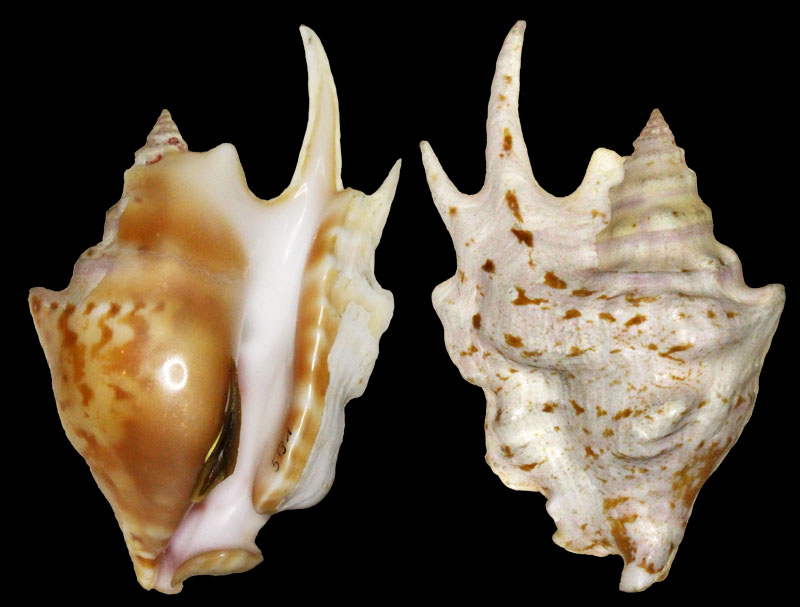
Sinustrombus taurus (Reeve, 1857); Kwajalein Atoll, Marshall Islands, Micronesia, North Pacific Ocean; on sandy bottom; 25 – 35 m; 100 mm; Coll. Francesco Giovanoli
Sinustrombus taurus (Reeve, 1857); Guam Island, Mariana Islands, Micronesia, USA, North Pacific Ocean; 20m depth, by diver, 127 mm; Coll. Maria Demertzis
References
- Anonymous, 1960. Strombus taurus Reeve; Hawaiian Shell News vol. 3 (1960), p. 3, Fulltext
- Reeve, L.A., 1857-1858. Descriptions of seven new shells from the collection of the Hon. Sir David Barclay, of Port Louis, Mauritius. Proceedings of the Zoological Society of London 25: 207-210, pls. 37-38
- H.T. Ward, 1960. Live Strombus taurus found in Mariannas; Hawaiian Shell News vol. 8, no. 4, new series no. 2, p. 1, 4, Fulltext
Films
Film on Sinustrombus taurus

